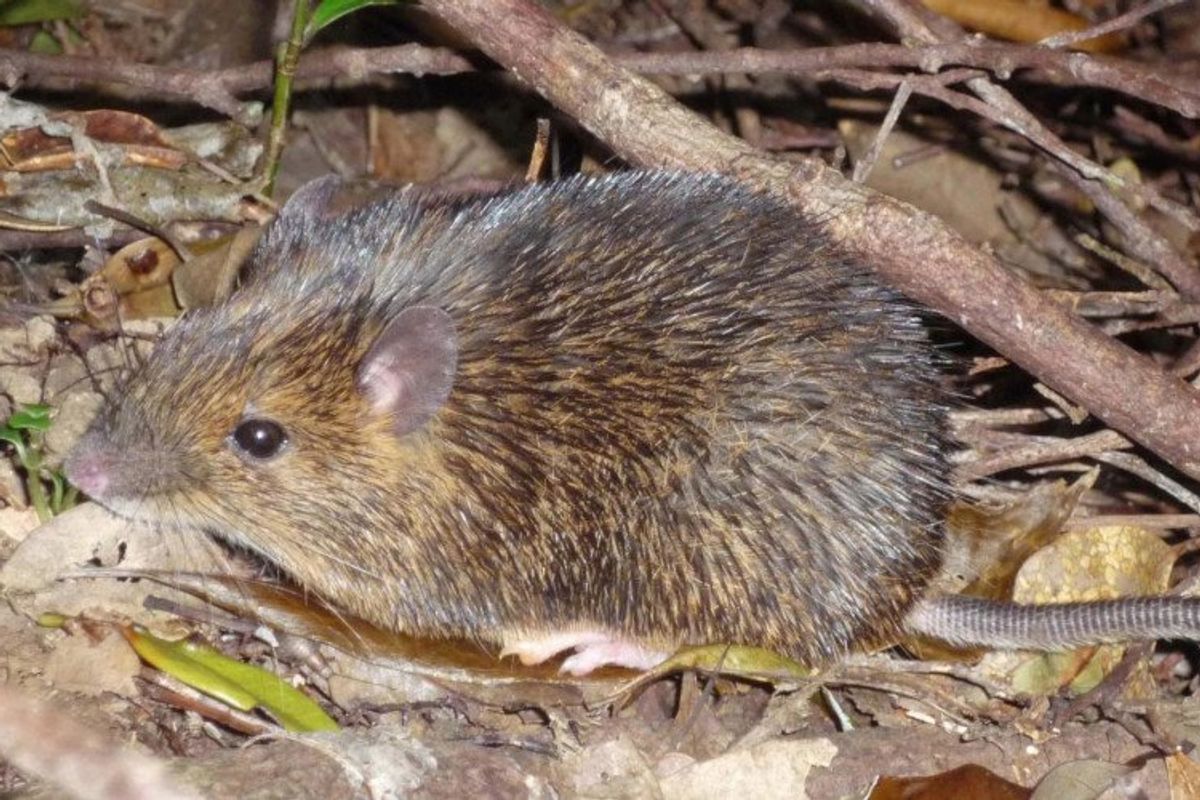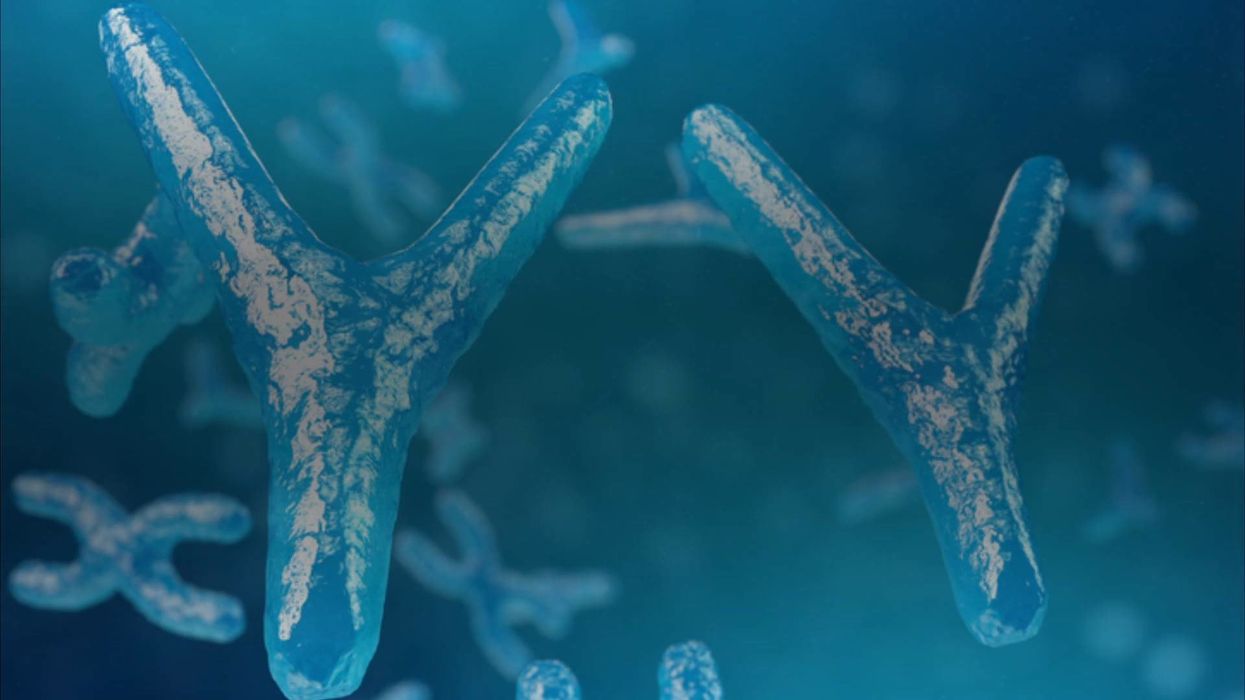Harriet Brewis
Aug 25, 2024
Scientists Completely Map the Human Y Chromosome for the First Time
Cover Media - Shareable / VideoElephant
The humble Y chromosome may seem simple, but it’s responsible for determining the male sex.
And the bad news… It’s degenerating in humans and may disappear in a few million years, which could lead to our extinction.
That is, some experts warn, unless we evolve a new sex gene. Fast.
The issue is that the Y chromosome has been decaying since it first formed some 180 million years ago, most likely thanks to inversions – when a segment breaks off and reattaches within the same chromosome, but in the reverse orientation.
This “reduced the Y chromosome’s ability to recombine with the X chromosome across the majority of its length and subjected its genes to the erosive forces associated with reduced recombination,” according to an article published in Nature.
In other words, the more bad mutations the Y chromosome accumulated, the smaller it got over time, forcing it to lose 97 per cent of its ancestral genes
The X chromosome, meanwhile, has conserved most of its gene content and order: it currently has around 900 genes compared to the Y chromosome's meagre 55.
So why has the male-determining chromosome been shrinking? And what does this mean for the future of men and humankind as a whole?
Why has the Y chromosome shrunk so much?
Let’s start with some basic biology: in the nucleus of a human cell, each DNA molecule is packed into a long thread called a chromosome.
Most human cells contain 23 pairs of chromosomes, with one half of each pair coming from one parent, and the other half coming from the other.
The 23rd pair are the X and Y chromosomes – aka the “sex chromosomes” – and the other 22 are called autosomes.
In humans and other mammals, females have two X chromosomes while males have one X and a Y.
What makes the Y chromosome so special (despite having far fewer genes than its X counterpart) is that it contains the SRY gene, which is responsible for kick-starting male development in the embryo.
It does this by acting as an on-off switch for the development of testes.
However, it wasn’t always thus.
"Our sex chromosomes weren't always X and Y," Melissa Wilson, an evolutionary biologist at Arizona State University, explained in a paper published back in 2014.
"What determined maleness or femaleness was not specifically linked to them."
Indeed, when the very first mammals evolved between 100 and 200 million years ago, they didn't have sex chromosomes at all, Wilson explained.
Instead, the X and Y were just like any other set of chromosomes — identical in size with corresponding structures.
Indeed, some animals don’t rely on sex chromosomes at all – for example, in the case of alligators and turtles, the temperature at which embryos develop determines their sex.

And, indeed, Jennifer Graves, a geneticist at Australia’s La Trobe University, suggested in a 2006 review, published in the journal Cell, that our mammalian ancestors shared this characteristic.
However, eventually, one of these ancestors must have developed the SRY gene and that was the end of that chapter: now, the Y chromosome was the key to developing male reproductive organs.
The problem then became the unequal dosage of X genes in males and females, as Graves pointed out in a 2020 piece for The Conversation.
Because Y chromosomes contain completely different genes to Xs, they can’t recombine with them. Recombination is a process by which pieces of DNA are broken and put back together to produce new combinations, which creates genetic diversity and acts as a crucial form of natural selection.
But because Y chromosomes can’t undergo genetic recombination, they can’t shed their bad mutations through this process. Instead, they accumulate them until their genes are rendered useless and disappear entirely, as The Genetics Society puts it.
Graves’s research suggests that 166 million years ago, the Y chromosome had the same number of genes (1,669) as the X chromosome.
"So it doesn't take a great brain to realise that if the rate of loss is uniform — 10 genes per million years — and we've only got 45 left, the whole Y will disappear in 4.5 million years," she argued.
And yet, subsequent research has suggested that the rate of the Y chromosome’s degradation hasn’t been “uniform”. Rather, it has slowed.
In 2012, research published in the journal Nature found that our Y chromosome has lost only one gene since humans and rhesus monkeys diverged evolutionarily 25 million years ago, as Live Science notes.
Furthermore, it hasn't lost any genes since the divergence of chimpanzees 6 million years ago.

So the key question now is whether this degradation will continue or whether it has reached a point of equilibrium.
This was the subject of a debate in 2011, during which Graves took on Jennifer Hughes, of the Whitehead Institute for Biomedical Research.
During the discussion, Hughes argued that the Y chromosome has been around for hundreds of millions of years and proved that it can “outsmart genetic decay in the absence of ‘normal’ recombination.”
She stressed that most genes on the human Y exhibit signs of purifying selection, and that it has added at least eight different genes, many of which have subsequently expanded in copy number.
And yet, Graves has repeatedly emphasised that she is not foretelling the destruction of mankind.
Rather, she notes that other species have lost the Y chromosome and lived to tell the tale.
In her 2020 Conversation piece, she pointed to two species of rodents called mole voles and three endangered species of spiny rats, all of which shed their Y chromosomes, and SRY, independently.
And yet, they have managed to survive and still have males and females.
Graves pointed out that whilst it’s not clear how the mole voles determine sex without the SRY gene, a team led by Hokkaido University biologist Asato Kuroiwa has had more luck with the spiny rat.
Kuroiwa’s team discovered most of the genes on the Y of spiny rats had been relocated to other chromosomes. But she found no sign of SRY, nor the gene that substitutes for it.
Instead, they discovered a tiny difference near the key sex gene SOX9 on chromosome 3 of the spiny rat. This difference – a small duplication – was present in all males and no females.
As a result, Kuroiwa and her colleagues concluded that this small piece of duplicated DNA contains the switch that normally turns on SOX9 in response to SRY.

So what does this all mean for us?
Even if the Y chromosome does disappear, that doesn’t herald the end of humanity.
Instead, humans could evolve a new sex determining gene, just like those moles and rats did.
Still, such a process isn’t without its risks, Graves warned.
“What if more than one new system evolves in different parts of the world?” she wrote.
“A ‘war’ of the sex genes could lead to the separation of new species, which is exactly what has happened with mole voles and spiny rats.
“So, if someone visited Earth in 11 million years, they might find no humans – or several different human species, kept apart by their different sex determination systems.”
Let’s hope that Y chromosome soldiers on then, eh?
Sign up for our free Indy100 weekly newsletter
Have your say in our news democracy. Click the upvote icon at the top of the page to help raise this article through the indy100 rankings
Top 100
The Conversation (0)














Jasmine Crockett hits back at JD Vance's 'street girl persona' jibe